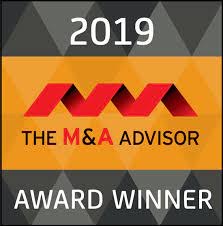By: Bob Morse
I’d like to share the results of an experiment with a radically transparent investment process Strattam Capital has pursued over the past seven years. We call it the Five-Point Plan .
Like many new methods, this approach arose in response to a seemingly intractable problem that’s well-known to founders, CEOs and private equity teams: the dreaded First Board Meeting Surprise. It happens after the back-and-forth negotiation of the deal itself, after each side has played its hand and the deal is finally done. Then the first board meeting arrives and, so often… surprise! One side or the other shares intentions or plans not revealed during the negotiation, causing the private equity partner and the founder/CEO to realize they are not starting out together with the same set of goals.
The nature of the frustration and emotion with the First Board Meeting Surprise is not that something arose post-investment: It is that something knowable in advance of the deal comes to light after closing and is a material change to expectations.
The surprises I’m referring to don’t arise from bad actors trying to intentionally mislead. In fact, it’s because they regularly occur among well-intentioned individuals that these surprises are so maddening. They usually relate to the intended conduct of the business after closing. For instance, the private equity firm expects their operations group to be welcomed for a thorough review just after closing, and the CEO finds the revealed scope daunting, disagrees with some of the resulting recommendations, and says so at the first board meeting. Expectations for how the private equity firm and the CEO would interact, and who would have the final word on operating initiatives and timing, reveal big differences in approach. Both sides feel justified. That is a first board meeting surprise. Or perhaps the CEO would like to ramp up R&D, or begin acquiring other businesses, and immediately asks for additional funding or relief on debt covenants, while the private equity firm expects a ‘focus on the core’ and considers debt compliance sacrosanct. Perhaps it is a personnel issue, where the new sponsor recommends replacement of an executive the CEO feels loyal to and supports in full. The CEO wonders why the need to replace a particular individual wasn’t insisted on before closing, and the new investors wonder why the CEO is reluctant to build an “A” team.
It’s embarrassing for all concerned, so it’s not talked about broadly in the industry. You will rarely find it on the agenda at LP meetings. But I have seen it play out all too frequently across my 25 years in private equity, and industry data confirms this phenomenon is pervasive. In fact, a 2017 study by Vardis and Alix Partners found that 43% of CEOs are replaced within two years of the private equity firm’s investment—and I guarantee that 43% of investment committee proposals do not say they intend to swap out the CEO within two years. (Sometimes there is a CEO change at a transaction, but this 43% rate excludes those planned Day 1 CEO departures.) Furthermore, the study cites the primary reason for early CEO firings as lack of agreement on the strategic direction and pace of change between CEO and investor.
Why are sponsors and CEOs so often surprised that they are not on the same page after a deal is done?
The answer, I think, is that while sponsors and management want to be aligned, the dynamics of the investment process work against them. The purchase of a company is a one-time, distributive negotiation with large dollars at stake, and it can be adversarial, full of tension, and tiring. On the other hand, the relationship between investor and founder/CEO in operating and building a company is a repeat-player game. That game requires a completely different perspective.
Upon this realization, we at Strattam formed a radical hypothesis: By adopting repeat-player thinking, we would necessarily focus our attention on the next set of moves that we and the founder/CEO wanted to make, and not just on the first step, thereby leading to joint agreement in advance of the deal—and better yet, zero surprises.
As we looked to transform this experiment into practice at Strattam, we asked ourselves a series of key questions, namely could we decide on a plan for the company in advance? And, more importantly, what would happen if we shared our due diligence findings, our best “secret sauce” ideas, and proposed action plan transparently during—and not after—the deal process?
We knew that an advance plan was possible. Every good investor performs substantial due diligence that informs their plans for the prospective portfolio company before signing a deal. The real question was whether sharing it was a good idea. There are some pretty scary, high-risk costs of transparency during a negotiation. The CEO/Founder might see the huge value in our proposed actions and insist we pay a higher price for the company, or share those ideas with a competing bidder to get a higher price, or simply adopt those ideas without taking our investment at all. Perhaps the Founder/CEO would completely disagree with elements of our plan and decide not to work with us, again costing us the transaction.
But perhaps the CEO/Founder would be excited about the action plan, provide input to improve it, and refocus their energy entirely on where we were going to go together. And, because nothing knowable in advance of the deal on our side would remain hidden, and reciprocal engagement from the Founder/CEO on the plan would reveal their true views on critical items, there would be no First Board Meeting Surprise.
I was confident in this potential outcome because I’d experienced it nearly 10 years ago, as I was trying to convince a CEO to lead a company my firm was considering acquiring. At the time, Intermedia was a hoster of Microsoft Exchange email for small businesses, and it was being divested from a larger company, so it would not come with a CEO. I was evaluating Intermedia in partnership with Phil Koen, who we had invested behind in his prior CEO role, and Mike Gold. Phil believed the business had promise, but that it would need to take certain actions to have a chance at becoming a leader, specifically adding voice and file-sharing capabilities to complete an office-in-the-cloud suite, and adding to its leadership team. He said, “I’m only willing to take the CEO role if you as investor commit to provide the resources and support to take these actions, either buying or building the full-suite products and adding to the team.” Because of our prior positive experience together, and because we needed each other in order to make this opportunity a reality, we took the unusual step of writing down those commitments. We shook hands on a one-page plan. With that, he agreed to join as CEO, shared the action plan with his prospective inherited team, and only then did we sign the paperwork to acquire the business. On the day of the deal announcement, Phil shared the action plan with the whole company, and it formed the basis for our first board meeting agenda. Intermedia completed its suite and today, many-fold larger, is a leader in unified communications. I still have that one-pager framed on my wall.
Today, Strattam’s Five-Point Plan process requires us and the CEO to agree up front on post-transaction actions. That means we not only agree on the five key actions to take after the deal closes, but the CEO knows she has the resources and support to execute them. More importantly, we’ve eliminated the problem of the First Board Meeting Surprise because no one has any surprises to share.
This is radically different from the usual way of doing things in private equity. Typically, the sponsors complete the control buyout and then kick off a strategic planning review process of some form. In that process, the sponsor expects to have the final say on a number of important questions. If they can’t eventually agree with the CEO, they look for a new manager who will execute the desired strategy and pace of change. Under the common practice, tensions might be high—but at least the private equity investors win the deal. But is it worth winning? Recall that some 23% of all private equity deals fail to return their initial capital (see this Bain & Company report, pg. 28). My experience is that there is high correlation between CEO turnover and poorly performing investments.
One measure of success for the Five-Point Plan, on the other hand, is that companies immediately begin to use it. When the company CEO stands up at an all-hands on the day the deal is announced to share the news, she not only says that the company has taken an investment from Strattam, but also explains what the company is going to do with the money based on the action items in the Five-Point Plan. In this way, all employees benefit from this approach. And when we arrive at the first board meeting, the Five-Point Plan is the agenda.
The theoretical framework for the Five-Point Plan comes from the sphere of operations, rather than of investing. Just as it is in manufacturing, and increasingly in software development, our system is optimized through feedback loops that build quality into the initial design. This approach involves making visible the work to be done, limiting the work in process (WIP) to improve flow, and valuing learning:
- Making work visible: The Five-Point Plan lists the actions within the company’s control to take (such as “hire a head of demand-gen marketing”), not just a high-level goal (such as “increase bookings 20%”), along with a budget, timeline, owner(s) and measure of success for each action.
- Limiting WIP: A Fifty-Point Plan is notten times better than the Five-Point Plan; in fact, it is worse, as partially complete projects clutter the agenda. As such, we restrain the number of work projects to increase execution speed.
- Valuing learning: By sharing our assessment, best ideas and “trade secrets” with the CEO before signing, and discussing those topics openly, we acknowledge that we are still learning, reveal whether the CEO shares this mindset, and inevitably improve the go-forward plan.
Of course, the plan is not set in stone. It has to be flexible. The world always intervenes, and the moment the deal closes, events unfold, as 2020 has amply demonstrated. A competitor becomes available for acquisition, a workforce needs to work remotely, a small product line develops unexpected momentum – these are the unexpected developments that we all as leaders and board members must prioritize as they arise. But we can avoid some surprises. We can minimize the risk of CEO-Board confusion due to differing goals. We can begin our repeat-player relationship before signing the deal.
Yes, there is risk in the approach. Full transparency of ideas inherently leaves an investor vulnerable. But we decided that’s the acceptable price for materially improving sponsor-CEO alignment in the deals we do close. In practice, we’ve found plenty of deals to close (25 Founder-led platforms and add-ons to date), and less than a handful where we could not agree the Five-Point Plan. Few Founder/CEOs we know are particularly interested or inclined to cash in an information advantage during a one-time negotiation with a prospective long-term investor. If they do, and if for any reason we can’t agree in advance of signing, then we won’t do the deal—and we’re okay with that.
How does our data compare with the 43% CEO replacement figure noted earlier? Strattam is a young firm, with only five platform investments that are more than two years old. Within that set, one of the five had a CEO change within the first two years. That one case was a Founder who planned to retire and had included succession planning in the Five-Point Plan, so it was a planned change. But, there’s always a rationale—so let’s keep to the strict definition, and say that to date, our two-year change rate is one in five. If proper up-front alignment can reduce the early-CEO-replacement rate by half relative to the industry average (i.e., one in five, rather than two in five), then that change alone is a big improvement in overall portfolio construction and expected performance, in my view. And private equity firms whose CEOs are more aligned, with fewer early change-outs, should be more-preferred partners to future CEOs, reinforcing a virtuous circle. With more time, we will gather and share more data—but the trend is definitely positive.
Granted, this approach may not be fitting for all situations. Strattam invests in independent, founder-led technology businesses. Typically, we are majority investors, and the founder is rolling a significant stake alongside us. We look for situations where a targeted set of actions can, in expectation, deliver a higher growth trajectory, through a combination of changes to people, process and scale. As such, the Five-Point Plan approach may not work for other deal types—for instance, where few changes in company post-closing operations are intended.
In the right situations, however, we believe that a more transparent pre-signing investment process, like our Five-Point Plan, is the most promising way to begin a partnership between a private equity sponsor and a Founder/CEO. I am sharing this approach in the interest of encouraging others to experiment with it. Consider showing your hand more openly before closing. Invite the Founder/CEO to do the same. See what happens.











